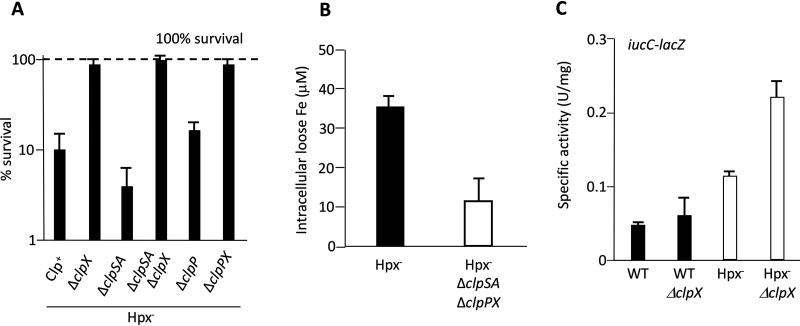FIG 9.
Clp proteins sustain the intracellular pools of free iron during H2O2 stress. (A) The ClpX protein increases the vulnerability of cells to oxidative DNA damage. Cells were aerated for 2 h and then exposed to cysteine and 2.5 mM H2O2. After 2 min of H2O2, cell survival was determined by colony formation. The combination of cysteine and millimolar H2O2 triggers the production of hydroxyl radicals by cellular pools of loose iron. The dashed line represents 100% survival. (B) The Clp proteins increase the intracellular pool of free iron that can be detected by EPR. Hpx− cells were aerated for 2 h before measurements. (C) The expression of the Fur:Fe(II)-repressed iucC-lacZ fusion was determined after 2 h of aeration. Elevated expression indicates that the intracellular loose-iron pools are inadequate for full protein metallation. Strains: LC106, ASE7, ASE11, ASE21, ASE67, ASE119, ASE125, MS100, ASE412, MS103, and ASE425.

